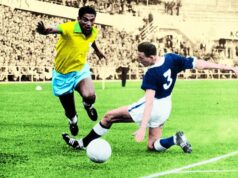Athletes train week after week and month after month to compete at their highest level when game day arrives. But, what if you are an athlete who has suffered some form of hearing loss? Are competitive training and competition still options? And, if so, are there hearing devices specifically designed for athletic rigor? The answers: Yes, Olympic athletes with hearing loss have competed in these worldwide games. And, yes there are options. Here are some of the top hearing aid advancements for athletes.
Hearing Aid Drying Devices and Waterproofing
 A fact about athletes: They sweat. The predicament here is that even if they aren’t participating in swimming or diving events, there’s a good chance their hearing aids will get wet or moisture will collect inside the device. It’s important for athletes to use some of the latest devices to dry out their aids.
A fact about athletes: They sweat. The predicament here is that even if they aren’t participating in swimming or diving events, there’s a good chance their hearing aids will get wet or moisture will collect inside the device. It’s important for athletes to use some of the latest devices to dry out their aids.
Dry Aid and Dry Caddy are two options. These devices capture the moisture from inside hearing aids in order to extend the life of the device and to prevent moisture accumulation, since moisture corrodes the battery. When drying out a hearing aid, it’s also important to remember the quality of drying can vary depending on temperature, air movement, exposed surface area, and humidity. Except for humidity, the higher the other factors the higher the rate of drying.
Another option is waterproof hearing aids. However, these can be pricey. So, an alternative inexpensive tactic is to use plastic sleeves that fit over the hearing aid to reduce moisture. Whatever option is chosen, hearing aids should be dried out daily. This will keep them functioning properly and without sound distortion.
Ways to Keep the Hearing Aid in Place
 If you’re an athlete, there’s also a good chance you’ll be knocked around, even if they aren’t playing a contact sport, which makes it imperative that a hearing aid is securely in place. One option is the use of HuggieAids, which are clear, flexible, plastic strap retainers that help keep hearing aids from falling off during activities. These not only keep hearing aids in place, but also prevent them from getting lost or being trampled.
If you’re an athlete, there’s also a good chance you’ll be knocked around, even if they aren’t playing a contact sport, which makes it imperative that a hearing aid is securely in place. One option is the use of HuggieAids, which are clear, flexible, plastic strap retainers that help keep hearing aids from falling off during activities. These not only keep hearing aids in place, but also prevent them from getting lost or being trampled.
In addition to using an FM system, many times athletes with cochlear implants wear sweatbands with hooks to keep the band and cochlear implant together. They also wear a cap made from a nylon knee-high to keep the processor on and keep dirt and dust out, or they sew a pocket in a sports bra to hold the processor or tape the cable to their neck using easy off surgical tape.
Fighting Feedback
Feedback is something anyone wearing a hearing aid tries to minimize, but athletes are put into situations that might directly cause feedback such as wearing helmets or the sound of the referee’s whistle. However, there are options for athletes to reduce their exposure to feedback. A baseball player could modify a batters’ helmet so that it only covers one ear, and the hearing aid could be worn in the uncovered. A football player could drill a hole in the top of the helmet, and then secure a BTE (behind-the-ear) hearing aid to the top with a microphone in the hole. They could then connect a piece of plastic tubing to the earhook of the BTE and the earmold in the ear.
If cost is not a factor, a custom-designed helmet containing an FM system is available. Although, it should be noted that a built-in FM system is likely an unfair advantage for teams because it allows a coach to speak directly to the player. However, it could easily be worn during tryouts and practice.
Team Effort
For teams with players who have hearing limits, the sport truly becomes a team effort. Coaches can partner players with “buddies,” who might tap them on the shoulder to give them directions, make sure they know the play called or remember to face them when speaking in order for them to see body language and read lips.
The use of hearing aids or having any form of hearing loss should not limit anyone from pursuing their athletic passions. Men and women have become Olympic and professional athletes with less-than-perfect hearing. However, one should work with a hearing professional to put together a plan for what devices and tools will work best so that you can focus on your jump shot and rebounding skills and not your hearing aids.
Runner image by david_shankbone from Flickr’s Creative Commons.
Cheerleader image by daveynin from Flickr’s Creative Commons.





